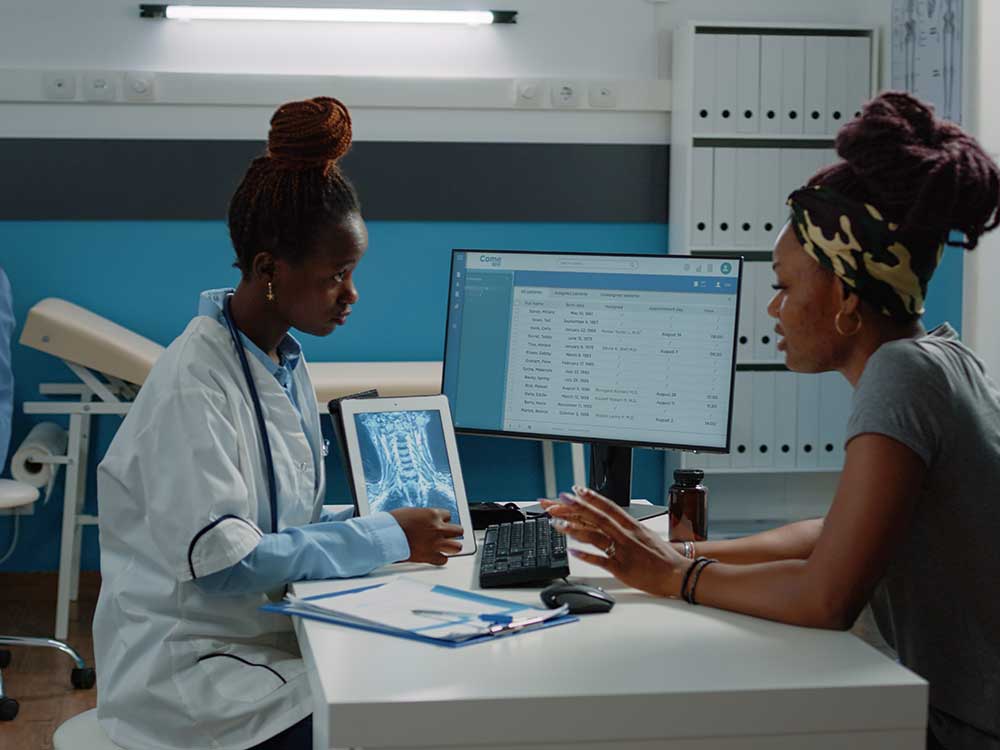Best Practices in Medical Management for Improving Performance and Decreasing Costs
In the ever-evolving landscape of medical care, the quest of ideal practices in medical administration is extremely important for enhancing efficiency and curbing expenses. By integrating sophisticated innovations such as digital wellness records and telemedicine, healthcare carriers can improve procedures and boost person care.
Leveraging Advanced Technology
The integration of electronic options into healthcare systems has actually transformed the way centers operate, streamlining procedures and improving patient treatment. By centralizing patient details, EHRs get rid of the requirement for troublesome paperwork and assist in seamless interaction among healthcare carriers.
Telemedicine is one more technological advancement that has actually reinvented patient interaction. It offers comfort for both clients and medical care experts by making it possible for remote consultations, which can minimize the need for in-person brows through and optimize consultation scheduling. Additionally, telehealth systems can extend medical care accessibility to country or underserved areas, bridging spaces in treatment shipment.
In addition, making use of Artificial Intelligence (AI) and maker knowing is coming to be progressively widespread in predictive analytics, enabling early discovery of prospective wellness issues and more educated decision-making. These modern technologies, when integrated properly, can improve analysis accuracy and personalize individual treatment plans, eventually leading to improved health care end results and functional efficiency.
Optimizing Resource Allotment
By tactically handling resources such as personnel, equipment, and funds, medical care facilities can considerably enhance their functional performance, improve patient end results, and minimize unnecessary expenses. The very first step in enhancing resource allotment involves performing a detailed assessment of existing possessions and recognizing areas where sources may be underutilized or exhausted.
Focusing on resource allotment based on individual needs and service needs is necessary. Implementing versatile staffing designs can additionally optimize labor resources by changing personnel appropriation in reaction to changing person volumes.
Monetary resources must be diligently kept an eye on and allocated with tactical foresight to sustain both temporary functional demands and lasting institutional objectives. This consists of investing in training programs that enhance staff competencies and adopting energy-efficient techniques that reduce operational costs (medical administration). Ultimately, an optimized resource allotment technique promotes a sustainable medical care setting that is receptive, efficient, and monetarily sensible
Streamlining Operations Procedures
When medical care centers goal to boost functional effectiveness, improving operations processes becomes an essential focus. Efficient workflows reduce redundancy, remove unneeded steps, and enhance control among healthcare professionals. This technique not just speeds up service distribution however also enhances the top quality of individual treatment.

Next, technology combination plays a significant function in simplifying workflows. Carrying out digital health documents (EHRs) and computerized doctor order access (CPOE) systems minimizes paperwork, reduces human mistake, and makes certain info is obtainable to all relevant personnel. Furthermore, leveraging telemedicine systems can streamline patient examinations and follow-ups, lowering the pressure on physical infrastructure.

Inevitably, structured process result in cost reductions and boosted person satisfaction, fostering an extra lasting health care atmosphere.
Enhancing Information Administration
Building upon structured operations, enhancing data management becomes an essential part ahead of time health care administration. Reliable information administration systems are essential for maintaining exact individual records, enhancing decision-making, and making certain compliance with regulatory criteria. By applying robust data monitoring options, health care facilities can boost the quality of patient treatment while at the same time reducing functional expenses.
One key element of boosting information management is the assimilation of advanced digital health document (EHR) systems. These systems assist in the seamless exchange resource of individual information throughout different divisions, decreasing replication of tests and decreasing mistakes. A properly designed EHR system supports information analytics, enabling doctor their explanation to recognize patterns and make informed decisions regarding client treatment.
Moreover, securing person data is extremely important. Adopting extensive cybersecurity actions, including file encryption and routine audits, makes certain the integrity and privacy of delicate information. This not only secures people but also maintains the organization's online reputation.
Buying personnel training is an additional crucial aspect. Enlightening medical care professionals on data management methods improves their capacity to effectively utilize technology, resulting in enhanced client outcomes. Finally, enhancing data management through advanced technology and extensive training is vital for accomplishing performance and price decrease in clinical administration.
Fostering Collaborative Communication
A critical component ahead of time clinical management is cultivating joint interaction among healthcare specialists. Efficient communication is critical for guaranteeing seamless client care, optimizing therapy end results, and reducing errors. By urging open discussion and sychronisation across multidisciplinary groups, health care organizations can boost their functional performance and minimize unnecessary prices.
Central to this technique is the combination of communication innovations such as digital health and wellness records (EHRs) and secure messaging systems, which help with the rapid exchange of critical individual information. These devices allow doctor to gain access to and share data in genuine time, guaranteeing that all staff member are notified and aligned in their decision-making procedures. Moreover, normal team conferences and interdisciplinary rounds can additionally promote a society of collaboration and responsibility.
Educating programs concentrated on boosting interaction abilities are additionally essential. Ultimately, fostering collaborative communication leads to enhanced health care shipment and expense savings.

Verdict
Including advanced technology, such as digital wellness documents and telemedicine, along with enhanced resource allotment and streamlined workflow procedures, is vital for boosting performance in clinical administration. Effective data monitoring and cultivating collective communication among healthcare groups are critical for decreasing redundancies and enhancing care quality. By focusing on precautionary care why not look here and involving in top quality enhancement campaigns, medical care companies can achieve significant price financial savings and improved patient end results, thus making certain lasting health care delivery in a significantly complicated environment.
Comments on “Medical Administration Programs: What to Search for in a High quality Program”